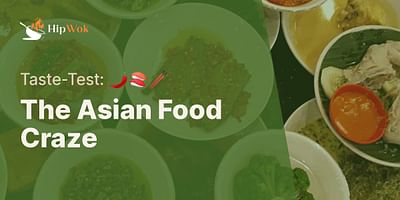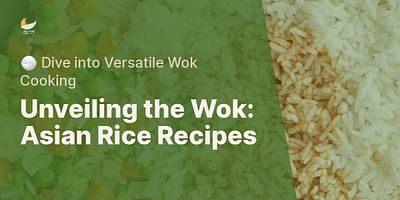Marina Lakin is a professional nutritionist who ardently trusts in the benefits of wholesome, home-prepared meals. She encourages the incorporation of wok in regular cooking as it enables the creation of diverse, nutritious meals in a swift and simple manner.
Asian cuisine is known for its bold and fiery flavors, often incorporating a wide range of spices and chili peppers. The spiciness in Asian food is not only about adding heat to a dish but also about enhancing the overall taste and experience. Let's delve into the reasons behind the spiciness of Asian food and the cultural significance it holds.
1. Cultural Diversity: Asia is a vast continent with diverse cultures and cuisines. Many Asian countries, such as India, Thailand, China, and Korea, have a long history of using spices in their traditional cooking. Spices were not only valued for their flavor but also for their medicinal properties and ability to preserve food in tropical climates.
2. Climate and Geography: The hot and humid climates of many Asian regions can lead to the growth of bacteria and spoilage of food. Spices, particularly chili peppers, have antimicrobial properties that help combat these issues. The spiciness in Asian food not only adds flavor but also acts as a natural preservative.
3. Health Benefits: Spices used in Asian cuisine, such as turmeric, ginger, garlic, and chili peppers, are known for their numerous health benefits. They can aid digestion, boost metabolism, reduce inflammation, and provide antioxidant properties. Incorporating these spices into meals not only adds flavor but also promotes overall well-being.
4. Balance and Harmony: In Asian culinary traditions, the concept of balance and harmony is highly valued. Spiciness is often used to balance other flavors in a dish, such as sweetness or richness. It adds depth and complexity to the overall taste profile, creating a harmonious blend of flavors.
5. Cultural Significance: Spicy food is deeply rooted in the cultural heritage of many Asian countries. It is a way to showcase regional flavors, culinary traditions, and cultural identity. For example, Sichuan cuisine in China is famous for its numbing and spicy flavors, while Thai cuisine is known for its vibrant and spicy curries.
6. Social and Psychological Factors: Spicy food can elicit a pleasurable sensation and release endorphins, which can create a sense of happiness and satisfaction. It also encourages communal eating and sharing, as people gather around a table to enjoy the flavorful and spicy dishes together.
When cooking Asian food, using the right cookware is essential to achieve the desired results. A wok is a versatile and indispensable tool for preparing spicy Asian dishes. Its high heat retention and even distribution allow for quick stir-frying, deep-frying, and simmering, ensuring that the spices are evenly incorporated into the dish.
Wok Types and Their Uses
| Type of Wok | Material | Heat Retention | Best For |
|---|---|---|---|
| Flat Bottom Wok | Carbon Steel | High | Stir-frying, Deep-frying |
| Round Bottom Wok | Cast Iron | Very High | Simmering, Slow Cooking |
| Non-stick Wok | Aluminum with Non-stick Coating | Medium | Low-fat Cooking, Easy Cleaning |
| Electric Wok | Stainless Steel | Low to Medium | Indoor and Precision Cooking |
At Hip Wok, we have a wide range of woks suitable for Asian cuisine. Our website also offers tips on seasoning your wok to enhance its non-stick properties and longevity. Visit our site for delicious Asian recipes, including spicy dishes that will take your taste buds on a flavorful journey.
In conclusion, the spiciness in Asian food is a combination of cultural heritage, health benefits, and a desire for balance and harmony in flavors. It adds depth, excitement, and a unique sensory experience to Asian cuisine. So, embrace the heat and explore the world of spicy Asian dishes with confidence and delight!














